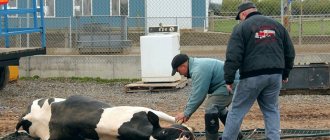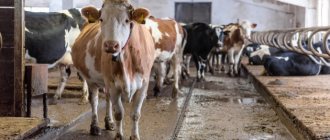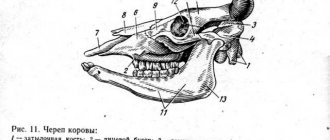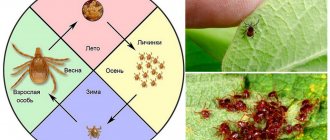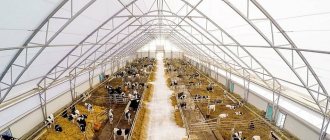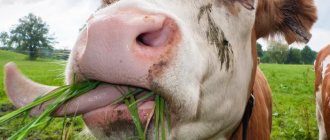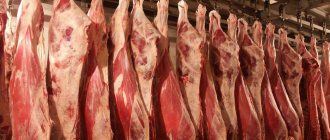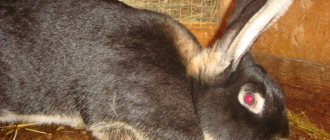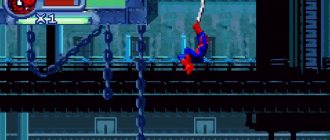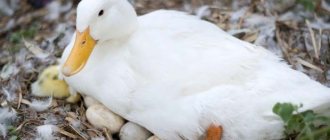Livestock » Cows and bulls
0
2543
Article rating
Kira Stoletova
Almost all people eat meat (beef, pork, poultry), but few people know how this product gets to the table. Slaughtering bulls or cows is a routine job for butchers, cattle breeders, and farmers. This is difficult work on a physical and psychological level. You must have a strong character and be able to not give in to emotions. Usually strong men do this kind of work, because slaughtering a bull weighing over 200 kg is an impossible task for a woman.
Calf slaughter
Preparation for slaughter
Before starting this procedure, it is necessary to prepare properly. First, you need to bring a veterinarian who will perform an examination and give permission to kill. You cannot kill a sick animal for subsequent sale of meat. If raising livestock is aimed at subsequent slaughter, then you need to monitor the cleanliness of the place where the animals live and their nutrition. Infestation can occur due to unsanitary conditions where cows sleep, as well as hay or grass of unknown origin.
If the calf has cancer, rabies, tetanus, bluetongue, tetanus, plague or anthrax, then the killing must be canceled. When these diseases are detected, the animal is treated or (if the stage of the disease is so high that treatment is useless) killed and disposed of.
- The day before this procedure, it is advisable not to feed the cow. If this is not taken care of, and the cow continues to eat food until slaughter, then this will affect its cutting - a full intestine will not allow the cow to be slaughtered and butchered correctly. Drinking may not be limited.
- To prevent dirt and germs from getting on the meat, before killing you need to thoroughly wash the bull and the place where this will happen.
- You cannot scare the animal: the quality of the meat will suffer as a result. During periods of stress, less lactic acid is produced, as a result of which the taste of meat decreases and it becomes unattractive in appearance.
When a cow is slaughtered
Experienced breeders advise sending cattle to slaughter when they are 1 year old. During this period of time, the animal manages to gain the required body weight. In addition, farmers do not have to spend a lot on feeding it. After one year of age, growth is no longer so active.
Closer to the autumn cold, a cow that was born in the spring is slaughtered. This is due to the fact that over the summer the cattle manage to gain muscle relief as a result of receiving a large amount of nutrients. In addition, when pastured, the quality of the resulting meat significantly improves.
If males are castrated, they will begin to quickly gain weight, regardless of their diet and diet. It is better to slaughter in the morning, since at this time it is still cool and there are practically no insects. However, farm workers should take into account that cutting and skinning a carcass takes more than 3 hours.
Slaughter stages
There are certain steps that professionals recommend following. Let's look at them in more detail below.
Stun
When deciding to stun a calf, you need to remember that the tool must be blunt and the diameter must be at least 10 cm. The hammer must be non-metallic, without sharp corners (this can break the skull). You need to hit the forehead bone between the eyes. When hit correctly, important receptors are switched off and the calf loses consciousness. If the shock is too strong, blood accumulates in the lungs and heart; if it is weak, the animal will not pass out and will feel severe pain.
Bleeding
The cow switches off for 2-3 minutes. During this time, you need to take a large, well-sharpened knife, cut the skin on the neck, and cut the carotid artery and veins next to it. Then hang the animal upside down using a winch. Place a container so that the blood can drain into it. The blood drains for about 10 minutes. It all depends on the size of the cow.
Flaying
After the blood has drained, you need to follow the rules for cutting a calf. First, the head is cut off, then the esophagus is bandaged. The animal is placed on its back on a specially prepared wooden structure in the form of a flooring and 2 bars, between which the cow is laid. Using a knife, cut the skin from the throat to the anus, making cuts above each hoof. On the inside of the limbs, the skin is cut from the belly to the hooves, then the skin is removed from the front limbs, from the torso and from the hind limbs. At the last stage, the skin is tightened on the sides of the spine.
If you do everything carefully, skinning will not cause any trouble. When doing this for the first time, it is better to ask for help from a specialist who probably knows how to properly slaughter a calf or steer.
Home method of stunning
On farms, a hammer is used to stun cattle. This method has been used for decades. To stun a cow, it is better to use a wooden hammer weighing 2 kg. It’s good if the handle of the tool is as long as possible – about a meter. The base of the hammer used to strike should be slightly convex.
It is not recommended to use metal tools or hammers with sharp ends - they can damage the brain of the animal being slaughtered. The blow is applied to the head, slightly above the eyes in the frontal part. The force of the blow should be such that the hammer does not pierce the skull, but the animal passes out.
With the advent of air pistols, stun hammers are used less and less. Firstly, for a clear blow with a hammer, the cattle have to be fixed in a stall, which causes anxiety. Secondly, an incorrect blow can disrupt blood circulation, which will lead to spoilage of meat and torment of the animal. Pneumatics are much more reliable in this sense.
How to properly cut
Cutting is also an important step. The carcass must be butchered immediately after the killing. The main rule of cutting is cleanliness and adherence to the order of stages. First you need to separate the udder or genitals (in bulls). Care must be taken not to damage the intestines. Cut the chest bone, separate the trachea and esophagus. Cut the abdominal wall lengthwise (do not cut across), cut off the pubic symphysis.
Next, you need to cut off the fatty layer of the stomach, take out the intestines, then the spleen and stomach, cut out the liver, heart, lungs, and then take out the trachea and diaphragm. Cut off the muscles along the spine. Use an ax to chop the carcass in half, strip the carcass of fibers, remove any remaining fat and blood clots, rinse the meat with water, and leave to dry. If you follow these rules, the procedure will proceed correctly and without consequences.
Division into varieties
Every experienced housewife knows that there are different types of beef. But as practice shows, for some reason most people are sure that the division into grades refers to the degree of freshness of cow meat.
In reality, the grade only tells you what part of the carcass the flesh is cut from. The type of beef has nothing to do with the freshness of these parts. There are 3 grades in total - the highest, first and second. So that you do not make a mistake when choosing, we have prepared a short list:
- The back flesh near the ridge is the highest grade;
- Brisket – premium quality;
- Sirloin and sirloin – premium quality;
- Rump and rump are the highest grade;
- Scapular and subscapular parts – 1st grade;
- Neck and flank – 1 grade;
- Front and hind shanks – 2nd grade;
- Cut - 2nd grade.
The type of beef is, of course, an important, but not the primary factor when choosing. First, remember - calves are always better than adult bulls or cows. The meat of calves is pink and soft. A grade 1 shoulder or neck from a calf will almost certainly be much tastier than the back or breastbone of an old cow, although technically they are of the highest grade. And secondly, it is better to take your own meat for each dish, and we will talk about this later.
Types of bull slaughter
There are several ways to kill a cow or bull:
- stunning with a sledgehammer, hammer, and then killing;
- use of firearms;
- use of electric shock;
- using gas (this is a rarely used method).
How to slaughter a bull as humanely as possible? The stunning method is the most popular and less painful for the animal, but not everyone uses this method. Some people drive cattle into a special gas chamber, and the animals simply suffocate.
You can kill a cow with a gun. The main thing is that there are no other cows or bulls nearby that might get scared and interfere with the procedure. It's important to kill right away. You need to aim right between the eyes. If you miss the target, the cow will not die immediately - the blood will clot and this will spoil the meat. Another popular method recently is stunning using an electric shock, which causes the cow to lose consciousness. Next, the procedure is exactly the same as for stunning.
The last way to kill is to simply slaughter the bull. Several people lay the bull on its side, tying its horns and neck to something stable that the animal cannot lift, then cut its neck with a large hunting knife.
Necessary equipment
You need to prepare thoroughly for the slaughter of a bull, taking care of the necessary tools. What you will need during the procedure:
- sledgehammer;
- sharp strong knife;
- blood collection containers;
- rope;
- clean rags.
Sledgehammer for slaughter
Industrial face
The slaughter of a cow at a slaughterhouse occurs somewhat differently than at home. Before killing, cattle are sent to special containers. Animals are slaughtered with a hammer or given electric shock and the carotid artery is cut. The cow is hung over a conveyor, the head is removed, the skin is removed, the animal is butchered, and the meat cut during slaughter is placed in refrigeration chambers. All this happens with the help of special technologies.
Many videos show techniques for killing a bull and cutting it up in slaughterhouses.
Construction of a slaughterhouse
On an industrial scale, cattle slaughter occurs in conveyor slaughterhouses. These are conveyor-type productions - from animal slaughter to cutting.
After transportation, the cattle are unloaded into stalls. If a veterinary examination has not been carried out previously, it is carried out in this pen. Cows can also be kept in the stall on a starvation diet.
The next stage is the transfer of livestock to the slaughterhouse. Large bulls are secured in a pen one at a time, where the operator stuns the animal with an air pistol. Next, the cattle are fixed by the pelvic limb with a chain to the conveyor and, after determining the live weight, the carcass is subjected to step-by-step processing:
- bleeding;
- separation of the head and distal limbs;
- skinning;
- rectal department;
- opening cavities and removing entrails;
- cutting up carcasses.
The technology of slaughter and subsequent processing of bull carcasses in industrial slaughterhouses is characterized by a high degree of process automation and careful compliance with sanitary and hygienic standards. All equipment and inventory are sanitized during breaks between contacts with meat, the staff sanitizes their hands and goes through disinfection barriers.
Mini-slaughterhouses for cattle are set up similarly. The slaughterhouses we produce for 2-50 heads are equipped with a place for slaughter, a small conveyor on which bleeding and subsequent processing of the carcass is carried out. Depending on the configuration, the meat processing plant can be additionally equipped with refrigeration equipment and a primary meat processing workshop.
Nuances of cattle slaughter
When butchering a cow, it is necessary to inspect the organs. Despite the veterinarian's permission, not all diseases can be seen during examination. If there are ulcers on the internal organs, the liver is enlarged, the blood is black, or there are tumors, this is a reason to call a specialist. Until his arrival, it is advisable to leave everything as is. If the result is negative, the meat cut during slaughter must be disposed of.
On the Internet you can find videos of bull slaughter that clearly show how to properly slaughter a calf or bull at home, and use the video as a guide. Slaughtering your calves is a responsible matter, and in order not to torture the animal, it is important to do everything as quickly and correctly as possible.
Methods of stunning livestock and the importance of the last hours of life of animals
Unfortunately, the slaughter of bulls was and remains not the most pleasant and aesthetic process. Of course, today there are technologies that make it possible to slaughter an animal so that it does not feel anything - stunning it is the so-called technological scheme of slaughter. For stunning on farms and slaughterhouses, several methods are used: impact stunning, electric discharge or stun gun.
It has been noticed that animals feel that they will soon be killed, so when sent to the slaughterhouse they begin to vigorously resist and kick. Try to calm cows and bulls so that they behave less aggressively.
The calmness of the animal in its last hours is important, because with severe neurosis, harmful substances begin to be released in the blood of cows and bulls that can spoil the meat. To prevent this from happening, do not kick, push or hit the animal.
Cutting a skinned carcass
The technology for slaughtering bulls and cows involves cooling the carcass for 2 hours after skinning it. Then you can hang the carcass on a hook driven into the crossbar or by the hind legs using a rope.
Butchering of a cow begins with the removal of the entrails. It is worth tightly bandaging the esophagus so that its contents do not leak onto the meat. First, the stomach and intestines are removed. From the intestines, if washed well, you can make delicious semi-finished products (sausages or homemade sausages). You also need to carefully remove the gallbladder. If it is accidentally damaged, you should immediately wash off the bile with a solution of potassium permanganate. Useful products would be the heart, lungs, liver and udder removed from the carcass and well washed (if cows are slaughtered for meat).
When cutting beef step by step, you should carefully, with minimal losses, separate the meat from the bones, ridding it of fat and tendons.
All parts of the carcass are cut across the grain with a continuous cut.
This ensures the best quality meat. To know how to optimally cut a beef carcass, you should familiarize yourself with the layout of the various meat parts.
- Neck.
- Blade part.
- Shoulder part
- Ribeye (aka thick edge).
- Brisket.
- little man.
- Thin edge.
- Peritoneum.
- Ovalok.
- Tenderloin.
- Pashina.
- Rump.
- Rump.
- Shanks.
The variety of taste qualities of different parts of beef, as well as their benefits for the body, make cattle slaughter a profitable business put on stream. In household conditions, it is more profitable to keep dairy cows, raising meat breeds for delivery to a meat processing plant. However, the slaughter technology described above allows an inexperienced farmer to learn how to slaughter a bull using improvised means and get tens of kilograms of quality meat as a result.
In a production environment where many cow carcasses are routinely slaughtered, they are given 12 hours to mature in a cool room after skinning and gutting. Thanks to this, the meat dries out and is covered with a protective film, which simplifies its transportation.
Slaughter process
The slaughter of cattle is usually carried out by specialized enterprises. In most cases, cows are transported by various means directly to the slaughter site. After they arrive at the enterprise, a certain list of activities is carried out.
Initially, it is necessary to restore the physical performance of livestock. To do this, he is given 2 to 3 days to recover. In parallel, work is underway to sort livestock, including conducting a veterinary and sanitary examination. While waiting for slaughter, cattle are put into starvation mode. And immediately before the slaughter, approximately 2-3 hours, the supply of drink stops.
The slaughter procedure consists of the following steps:
The individual is stunned using one of the previously mentioned methods. The next stage is the implementation of measures to bleed the carcass. Subsequently, the skin is removed
This procedure must be performed with extreme caution. Removing the skin containing elements of the fat layer and meat fibers is accompanied by a decrease in commercial quality
At the same time, damaged muscle fibers contribute to the introduction of various microorganisms, which lead to rapid spoilage of meat. The final stage is gutting. In this case, the internal organs are removed, and the carcass is cut into separate parts, depending on the total mass. In this case, this procedure should be carried out no later than 45 minutes after the animal is bled. For the convenience of carrying out all necessary operations, the carcass is suspended at a certain height.
The final quality of the product, as well as the overall percentage of meat obtained, depends on the correct observance of all stages of slaughter.
Use of carbon dioxide
Using carbon monoxide, as already mentioned, meat processing plants can slaughter calves or young bulls. To perform this procedure in this case, special carbon dioxide equipment is used. When using this technology, animals are first placed in a special sealed chamber. Next, a large dose of carbon dioxide is supplied to this box, causing the bull to fall asleep. The slaughter procedure using this technology usually takes no more than 3-5 minutes.
Russian technique
This technique has become quite widespread. This is due to the speed of the process, as well as the involvement of a small number of people. It will take no more than 10 minutes to slaughter a cow. If you have practical skills, you can slaughter 10 individuals in 1 hour.
Let's take a closer look at the algorithm for this type of slaughter:
- The essence of the method is to quickly insert a dagger into the space between the occipital bone and the first cervical vertebra. To do this, you must use a sharpened blade with a length of at least 26 centimeters.
- The animal is first brought into the slaughter chamber. It provides special fasteners for the floor covering.
- Initially, the cattle's horns are tied, followed by pulling the cow's head to the floor. This is necessary for the convenience of striking with a dagger. At the same time, additional measures are being taken to prevent cattle from falling over. They involve the use of a special block with pins, which is installed under the groin of the animal.
- Immediately after wedging the blade into the occipital region, they begin to strike with a wide knife in the lower region of the neck, directing the tip towards the location of the heart.
- As a result, a large flow of blood will gush out, which is accompanied by bleeding of livestock. The resulting meat products are distinguished by juiciness and high quality meat.
Characteristics of a standard modular complex
We just talked about a standard modular cattle slaughterhouse, designed to carry out operations quickly and accurately. Well-established production allows you to speed up the process of slaughtering animals.
But in order to install such a module on your farm, you must meet all technological requirements. The requirements for a room for installing a slaughterhouse complex begin with the dimensions: a room containing a box - 1220x244x554 cm.
To ensure that the meat production process does not fail, the module must be connected to a 380 V line. Be prepared for the fact that installing a modular slaughterhouse will require serious energy costs: 24 kWh in summer and 28 kWh in winter.
The use of by-products in medicine and cooking
Among all bovine organs, ox bile is of particular value in medicine. This product is used in both folk and traditional medicine.
Ox bile is used as a natural anesthetic for rheumatism, arthritis, joints and sprains. Cattle bile has an anti-inflammatory effect and is used to treat spondyloarthrosis, radiculitis and bursitis.
Bull eggs are a delicacy
Bull eggs and cow udder are considered one of the most popular delicacies in the world. These products are a source of strength and energy and easily digestible protein. Bull eggs are widely used in world cooking. Various meat dishes and salads are prepared from this low-calorie product. Bovine eggs contain useful microelements and B vitamins, vitamin E, PP, H, K.
By-products
The removed skin is examined and, if necessary, additional fat is removed, then it is carefully straightened and covered with salt.
The skin should not harbor putrefactive microbes or insects, and it should not turn into crackers. This skin is in demand among producers. The stomachs and intestines are washed in running water and subjected to further processing at the discretion of the owner. It is necessary to pay attention to the liver, lungs and spleen. Any violations in their integrity, consistency or form should be a reason to contact veterinary specialists
We invite you to join our group on VKontakte or Odnoklassniki, where new articles are published, as well as news for gardeners and livestock farmers.
